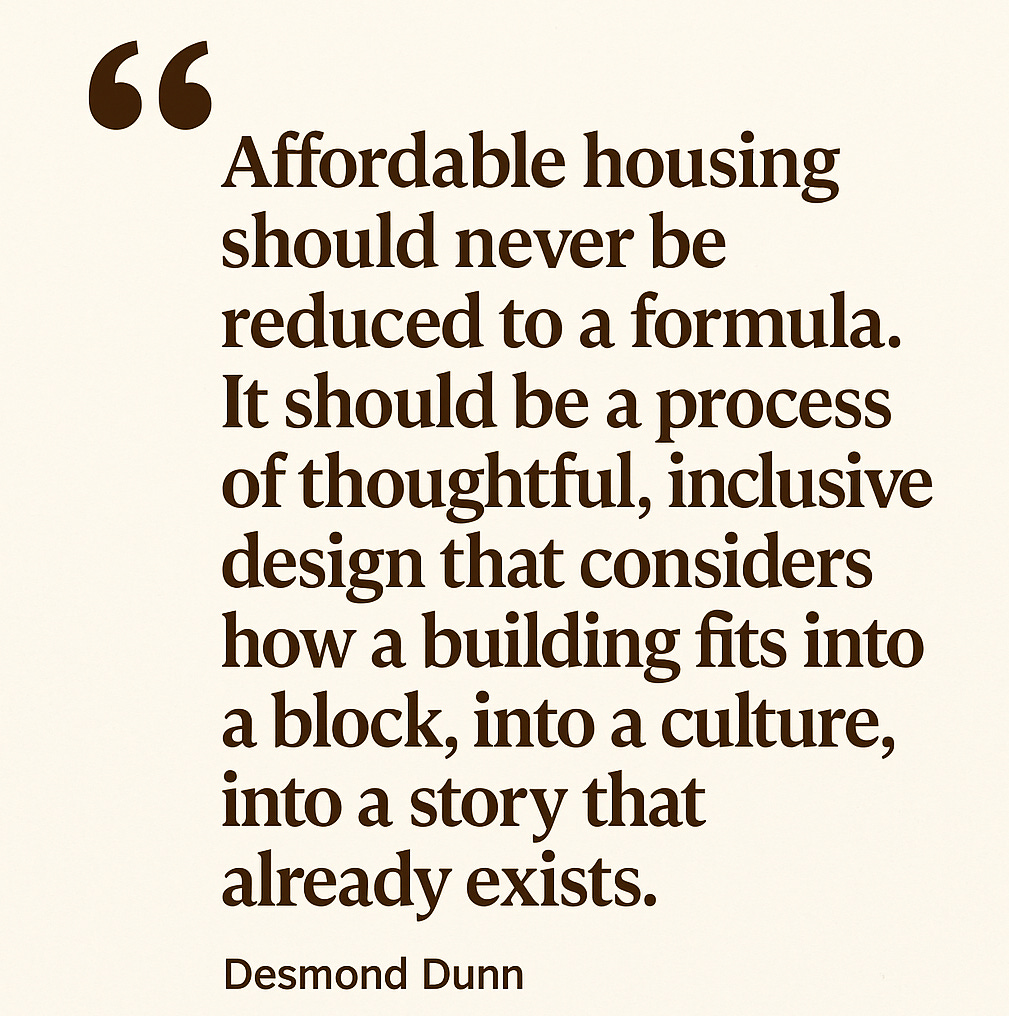Designing from the Heart, Not Just the Spreadsheet
Over the past couple of years, I’ve spent time deeply immersed in the affordable housing industry. I’ve gone to conferences, joined panels, walked sites, and sat across from everyone from seasoned LIHTC developers to first-time community organizers. I’ve listened, studied, taken notes, and paid attention not just to what’s being said, but what’s being left out.
And here’s what I’ve noticed.
Too many people in this space are designing affordable housing from a spreadsheet.
Not from community.
Not from context.
Not from care.
Just data. Just metrics. Just the deal.
Affordable Housing as a Business Model and a Mission
Now let me be clear: I’m not against affordable housing as a business. We need scale. We need capital. And we need smart, efficient operators to meet the urgency of this crisis. If someone is building quality housing with long-term affordability baked in, and it pencils, I support that.
But what concerns me is this: at conference after conference, I hear professionals speak about project timelines, tax credit syndication, and funding stacks for 20 minutes straight without once mentioning the people who are actually going to live in these buildings.
That’s not just a red flag. That’s a disconnect.
Because affordable housing isn’t just a financial product. It’s a foundation for someone’s life.
We Need More Designers with Lived Experience
This realization has shaped my development lens. I’ve come to understand my role differently. I’m part affordable housing developer, part community activist. I’m part operator, part advocate.
And we need more people like that in this field.
We need more professionals who can bring not just their credentials, but their creativity, their compassion, and their lived experience. We need folks who can see the housing crisis not just in units and yields, but in lives and neighborhoods.
Affordable housing should never be reduced to a formula. It should be a process of thoughtful, inclusive design that considers how a building fits into a block, into a culture, into a story that already exists.
The Bigger Picture: Community-Centered Development
I believe the next generation of housing leaders needs to do three things better:
Design for people first.
Not just to meet affordability targets, but to create connection points — places where people feel proud to live.Engage early and often.
Community engagement shouldn’t be a checkbox. It should be the compass guiding design, density, and investment decisions.Build mixed-income, car-optional, future-ready neighborhoods.
We need to think beyond units and start designing ecosystems. Communities that support economic mobility, reduce dependency on cars, and build wealth at the neighborhood level.
This isn’t just about design. It’s about values.
The Train Metaphor
Here’s something I’ve been thinking about:
The best time to get off a train is the moment you realize it’s heading in the wrong direction.
The longer you stay on, the further you get from where you’re actually trying to go.
For too long, parts of the affordable housing industry have been riding a train that prioritizes scale over soul, output over outcomes. But we don’t have to stay on that train.
We can build differently. We can lead differently.
And we can center people at the heart of the work.
Let’s design from our heads. Let’s design from our hearts.
Let’s build communities, not just units.


